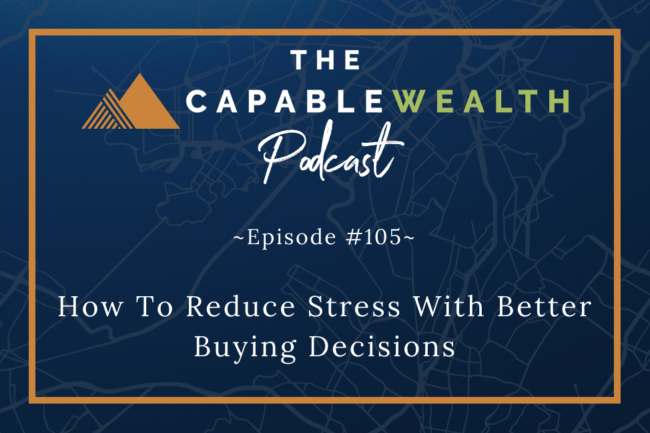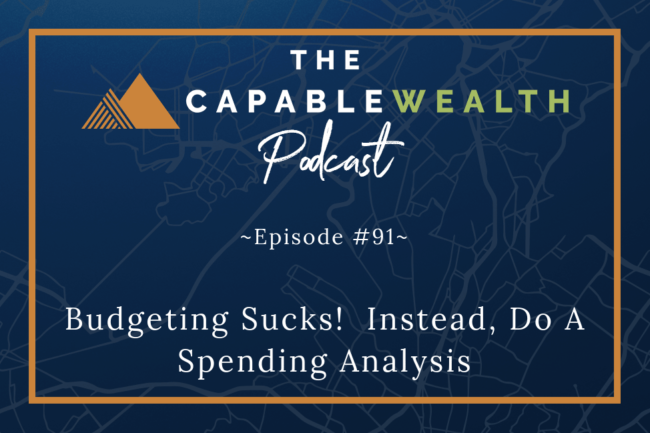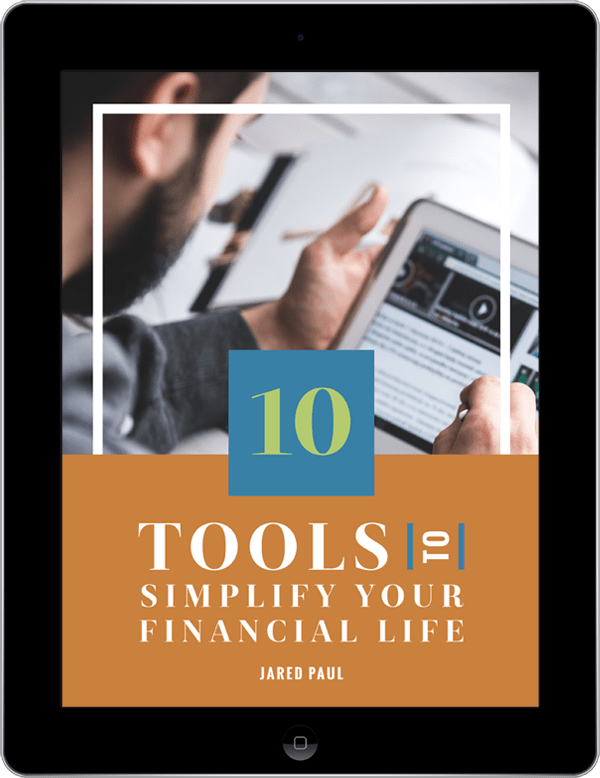When I first started venturing into the world of real estate, I encountered a mix of opinions. On some of the websites I read, it spoke about real estate as the greatest investment you could ever make. According to them, even when it rains outside, if you’re a real estate investor, it’s raining dollar bills, baby!
But when I spoke to some of my friends and family, and even random people I met at networking events, I was warned against getting into real estate. They would tell me about horror stories of their tenants from hell, or how they lost a bunch of money on a deal that went south.
So, what was the truth? How was I supposed to know if this was a good path to go down?
EDUCATION IS KEY
Like most things, when it comes to investing in real estate, it really helps if you know what you’re doing.
I’m a big proponent of spending on your own self-improvement, and I believe the best investment you can make is in yourself.
So, as I pondered which advice was the right one to take, I decided to find out for myself. And over the course of several months, I read dozens of books on real estate investing.
Just a handful of the books I read:
- “The Millionaire Real Estate Investor” by Gary Keller
- “Rich Dad, Poor Dad” by Robert Kiyosaki
- “ABCs of Real Estate Investing” by Ken McElroy
- “The Book On Rental Property Investing” by Brandon Turner
MY HUMBLE OPINION #1
Real Estate is AWESOME! If you’re willing to do some work.
In one of my previous posts, I detailed the 5 key reasons why real estate investing is awesome. You should definitely check it out if you want to read about why. After reading dozens of books, I decided there was no doubt that I was going to invest in real estate.
But instead of giving you a homework assignment to read all of the books I did, I’ll walk you through the steps I take when looking for real estate investments.
Let’s dive in.
WHERE TO BEGIN
Step 1 – How Much Can You Afford To Buy
The first step in the process is figuring out how much you can afford to buy.
For anyone who has gone through the home-buying process, you know about pulling all of your financial information together, going to a lender (a bank, most likely) and getting what is known as a pre-qualification letter. This is a letter that will give you a rough estimate of how much that institution will loan you for a mortgage. It’s based on things like your income, credit score, savings, etc.
Getting a pre-qualification letter is important because you need to know your price range before you begin your search. Also, a lot of places won’t even set up a showing unless you have one. They don’t want to waste time showing a building to someone who can’t even get approved for a loan to purchase it.
Make sure you shop around and speak to different lenders about rates and the terms they offer.
Step 2 – What Type Of Real Estate Do You Want To Buy
Once you start researching the real estate industry, you’ll realize there are many different types to purchase. You can buy single-family, residential multi-family, commercial multi-family, commercial retail, mixed-use, and more.
They all have pros and cons.
If you’re a new investor, it’s not likely that you’re going to jump into buying a 100-unit apartment complex on your first go-around. You’re most likely going to be looking at what is known as residential multi-family, which is a 2-4-unit building.
You could also look to buy a mixed-use property. An example of this would be a building with a retail store on the ground floor that also has apartments above it.
Some other options are self-storage units, laundromats, car garages, or a strip mall.
I’m a fan of multi-family investing, so that is where the rest of this conversation is going to focus.
INTERESTED IN REHAB?
You also need to consider if you’re willing to engage in some type of renovation project.
As you look at properties, you’ll find them in different conditions. Some are in pristine condition, while others need to be completely rehabbed.
Understand your capabilities when it comes to rehab, and be sure to factor in any costs if you plan to buy a property that will need some TLC.
Step 3 – Where To Invest
The next step is to think about the region you want to buy property in.
As the saying goes in real estate, it’s all about the location, location, location.
You really have to consider what area you’re going to buy in and what are the potential benefits and detriments of that area.
The closer you are to the city center in any town, usually the more sought-after the real estate. This would mean higher rents, but it also means that the real estate will cost more to purchase.
As you go farther out from the main parts of town, you’ll find cheaper properties, but those properties will bring in lower rents.
CASH FLOW VS APPRECIATION
In real estate, there is a debate about the benefits of buying for “cash flow” or for “appreciation.”
Buying for cash flow means that you are focused on how much income is left over from the income (rent) after you’ve paid for all of the expenses. If you can pay for all of your costs (including the mortgage) and still have a profit, then your property is a “positive cash flow” property.
In major cities, the name of the game is typically appreciation. The properties can be so expensive that you aren’t likely to produce a lot of net income after your expenses, so your cash flow (profit) won’t be very high. You’re hoping that the value of the property will continue to increase, providing you with a good return.
Obviously, the best of both worlds is finding a property that has positive cash flow and that becomes a popular part of town after you buy it. People will want to move to that part of town and then the value of the property increases. Double awesome!
MY HUMBLE OPINION #2
I tend to lean more toward focusing on cash flow instead of appreciation. Appreciation is an amazing bonus, but it’s not something you can absolutely count on; it’s a guessing game.
With cash flow, you can run the actual numbers and see what purchase price will provide you with the cash flow you require. It’s a lot clearer.
The way I look at it is to focus on strong cash flow positive properties, and appreciation will be the gravy on top. I certainly look for areas that have the potential to appreciate, but that isn’t my main focus.
Also, the more focused on appreciation (with less cash flow), the more you are potentially susceptible to shocks. If your property is just breaking even and you’re hoping for appreciation, you’ll have to pay out of pocket to take care of the property if anything goes wrong. Some can handle this just fine; others cannot. So, make sure you’re factoring that into your evaluation.
Step 4 – The Search
Now that you know what type of properties you’re going to look for, what areas you’re searching in, and how much you can afford, you can officially begin to search for and evaluate properties.
There are numerous websites and apps to help you with this. The most advantageous place to look is on the MLS (Multiple Listing Service). This is the main database of properties available on the market. The problem is, in order to get direct access, you have to be a real estate agent (or know one) to gain access.
If you don’t have that access, you can use apps like Redfin, Zillow, Trulia, or LoopNet (Focused on commercial).
I like to use Redfin because I’ve found it has a very robust and regularly updated database. You can go into the app and search your area based on a number of filters you select.
Set the search criteria of the app/website to the price range and type of property you want to purchase (for e.g., 2-4-unit property, between x and y price, in z part of town). You should get a listing of all the properties that meet your specifications.
Step 5 – Financial Analysis
Hold on, there!
Before you get excited and run off to go look at dozens of properties, there is a big step you need to go through first – CRUNCH THE NUMBERS!!!
It’s important to run the numbers BEFORE you go look at properties.
The last thing you want to do is waste your time driving across town to look at a property, and then come to find out that the financials are so far off that it is nowhere near your criteria for a wise investment!
So please, be patient and run the numbers before you go look at properties.
By the time you are actually walking through a property, you should be confident that it could be a good investment. And during your walk-through, you’re looking to see if there are any glaring issues that would be a cause for alarm.
Now, the financial side of evaluating a deal can be a bit in-depth, especially if you are new to this. For that reason, I’m not going to dive into it here. In a future post, I’ll go through how you should properly evaluate and assess a property and provide you with a template to help you do so.
Step 6 – Pulling Back The Curtains
At this point, you’ve probably looked at hundreds of properties online. You’ve run the numbers and eliminated the bulk of them. And now you’re left with a list of properties you believe could be good investments.
It’s time to set up viewings.
I recommend trying to clump your viewings together by geography. It’s way better if you set up a bunch of viewings all in one part of town instead of zig-zagging from one place to the next. Unfortunately, this isn’t always possible, but save yourself some hassle by trying to do it this way.
And let’s face it, you’re not a home inspector. Your ability to spot hidden problems won’t be nearly as good as theirs. But you can definitely get a sense of what end of the condition spectrum the property is on; well maintained or an absolute disaster.
Depending on your decision to engage in rehabs or not, you’ll know if it’s a property to continue to pursue, or if you should run for the hills.
Step 7 – Putting in offers & Negotiating
Now that you have a list of potential investment candidates, it’s time to start putting in offers.
Rank your properties in order of most attractive to least attractive. Ask yourself, if you could easily get any of the properties, which one would you choose? Put an offer in on that property and see what happens.
This is where things can get exciting!
Negotiating is a sport, and it is not for the faint of heart. You have to be willing to hold your ground and push back. And more importantly, you need to be willing to walk away at any point. Remember, this is an investment, not your “dream home.” (Don’t get me started on that).
If someone isn’t willing to sell for a price that makes it a good investment, then you walk away and keep looking. It took me a good 6 months of searching (after I had already done my research and educated myself) before I found a property I was interested in buying.
Don’t sink yourself over a bad deal that you fell in love with and couldn’t walk away from. This is how people have bad experiences in real estate, and then start telling everyone how awful real estate investing is.
Don’t be that guy!
Step 8 – Closing Process
After you’ve come to terms on a deal, there are still several hurdles to get through before you actually close on the property and own it.
You’ll definitely need to have an inspection performed, and there are bound to be things that would come up.
Each state has their own rules on what kinds of issues can open the contract back up to negotiation. There is typically a dollar amount threshold that triggers this, but you can also put it in the contract to alter that amount.
Be sure to check with your real estate agent and lawyer about all of your state’s contract laws. You want to understand exactly what can be negotiated, and what things trigger further negotiation.
And with the closing process, be prepared for this to take longer than expected. Unless you are buying for cash, there are bound to be hiccups along the way. Just be ready to respond quickly whenever something is needed from you.
DON’T BE THE BOTTLENECK IN THE DEAL
Please don’t ruin a deal by taking too long to provide documentation, or to sign paperwork and submit it to the lawyers or the bank.
You want things to go as quickly as possible. The longer things delay, the more possibility there is for a seller to back out of a deal. If it is a great deal, then you don’t want others to start chirping in their ear about how they could get more, and that they should back out.
THE ONLY THING HOLDING YOU BACK IS YOU
Everyone is in a different financial situation. Maybe you have tens of thousands of dollars saved up in the bank, or maybe you’re barely scraping by.
One thing that is common with most would-be real estate investors is the fear that something is going to go wrong and they’ll make a mistake. Unfortunately, this keeps people from ever investing in the first place.
Don’t let the fear of the unknown deter you from taking positive steps forward. There will always be unknowns, surprises, and risks.
The most important thing to do is TAKE ACTION! (This can be said about most things in life)
Create a game plan with a timeline of how and when you’ll invest. Do your homework to educate yourself, get pre-qualified, make decisions on when and where you’ll invest, and then start looking!
Like most things, you’re going to learn the most by actually DOING. So, get out there and do something that is going to create a better financial future for yourself!
MORE TO COME
If you haven’t figured out yet, I think real estate investing is pretty awesome, not just because I’ve read about it in books, but because I’m currently reaping the rewards!
As you probably saw throughout this post, there were some areas we didn’t go too deep into. This post isn’t meant to be an all-encompassing how-to for real estate investing. This is a high-level description of the steps you need to take in order to begin purchasing properties.
In future posts, I’ll go through some of the specific sections in more detail. We’ll cover areas like financial analysis (the numbers), negotiating, how to find a great real estate agent, and how to fund your investment if you don’t have boatloads of cash laying around.
Capably Yours,
















